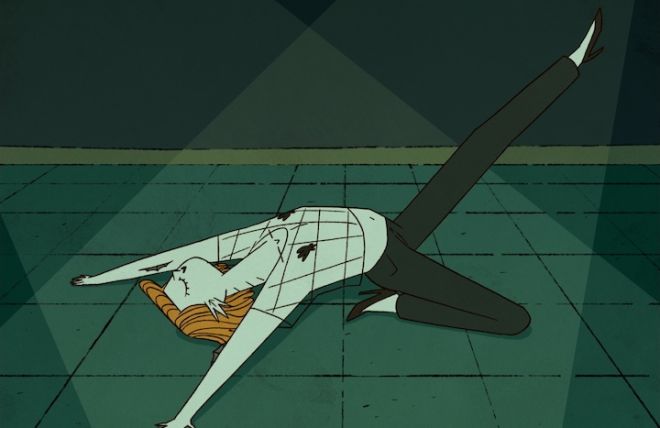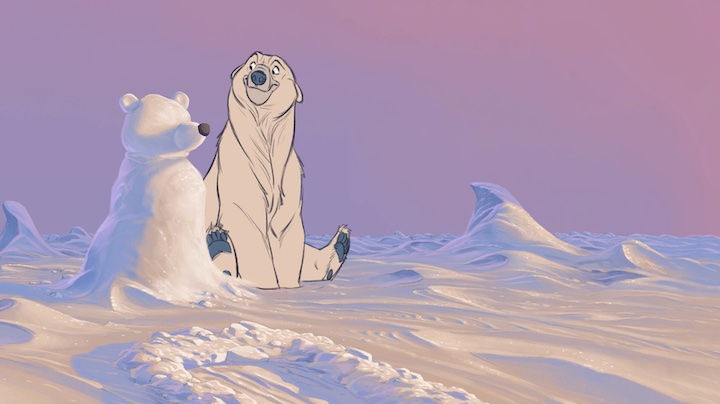A website dedicated to animation, awards, and everything in between.
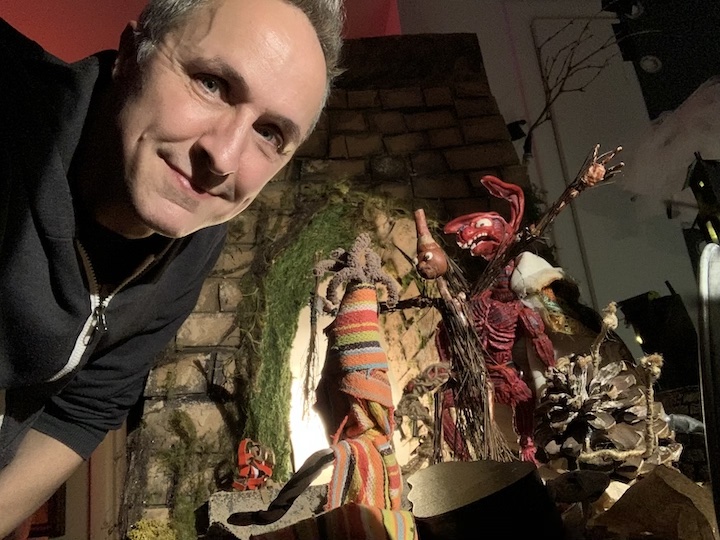
Credit: Michael Granberry making Les Bêtes.
Over the years, stop-motion animator Michael Granberry accumulated numerous puppets for projects that never saw the light of day. Rather than throw these unused puppets away, Granberry decided to feature them in his short film, Les Bêtes (The Beasts). Granberry started production at the beginning of 2020. Within the coming months, he’d have a lot more free time on his hands for obvious reasons. Les Bêtes went on to win the Jury Award for Best Short Film at Annecy and Best Animated Short at AmDocs Film Festival, qualifying it for consideration at the 98th Academy Awards. Cartoon Contender spoke with Granberry about working during the pandemic, why the film needed to be in black and white, and how his deteriorating puppets got a second life.
Watch Les Bêtes Here.
Q: You’ve worked on many other projects (Robot Chicken, The Tiny Chef Show, Guillermo del Toro's Pinocchio, Adventure Time, Severance, Tumble Leaf, the latter of which you won three Daytime Emmys for). How was Les Bêtes different from anything you’ve done before?
A: Les Bêtes was unique in many ways, but the biggest difference was that there were no scripts or storyboards; it was created in an improvisational, intuitive way, letting each shot dictate the next, which meant shooting almost all of the film in sequence - something I’ve never done before. This approach slowed everything down and caused delays when sets would be filmed, taken down, and then have to be rebuilt later because they were needed again...something that wouldn’t happen if there was a shot list. But it was also exciting because the puppets themselves seemed to be dictating where the story was going, and I was happy to let them lead the way.
Q: You started working on Les Bêtes in early 2020, just before the pandemic. You didn’t do a lot of planning ahead, with much of the short essentially being improvised. Did the dread most of us felt during COVID at all impact the film’s creepy imagery?
A: I had begun Les Bêtes as a side-project in January 2020, and when COVID lockdown happened in March 2020, it became my full-time occupation. The surreal nature of quarantine was as challenging to process for me as it was for everyone else, and I was grateful to have this weird project that kept me both focused and sane, but also gave me space to go creatively crazy. The realization that time was not a factor allowed shots to go on as long as they needed to, rather than trying to hit a wrap date. This freedom to explore gave ideas room to evolve into weirder, more complex spaces.
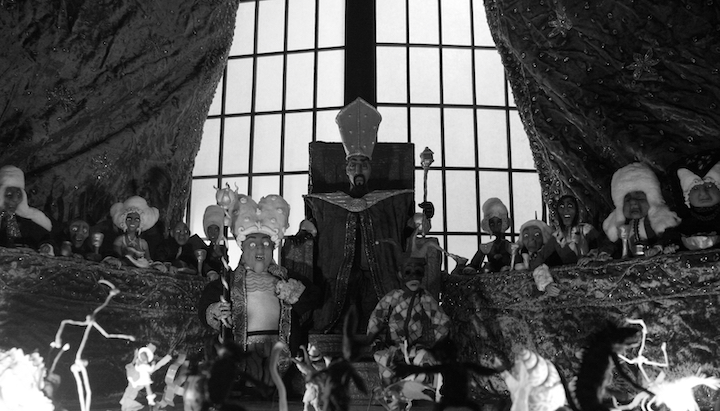
Credit: Les Bêtes (Michael Granberry).
Q: The dark cinematography and playfully demented puppet designs immediately reminded me of 1937’s The Tale of the Fox. As it turns out, that film’s visionary, Ladislas Starevich, was an inspiration for Les Bêtes. What was your introduction to Starevich?
A: My first introduction to Starevich came from a late-night cable show called Night Flight that would show strange animation and other obscure cinematic novelties. One night, they aired a clip from Starevich’s The Mascot, which had all of these strange beings - mice, goblins, toys, vegetables – being escorted into this archway by a devil character with a weird laugh. The film quality was terrible, and you could barely see what was going on, but it made an impression on me. It took me years to find the source of the clip, and that led me into the wonderful world of Starevich.
Q: Besides Starevich, did you have any other creative influences while making Les Bêtes?
A: As I was animating my way through the film, I wasn’t consciously trying to imbue it with other influences, besides a few moments that are nods to great visual artists such as Francisco Goya, Henry Fuseli, and Edvard Munch. In hindsight, though, I can see clear inspiration drawn from films like Tod Browning’s Freaks and the short story, Hop-Frog, by Edgar Allan Poe. Also, the work of Henry Selick, director of The Nightmare Before Christmas and Coraline, who I was working with at the time on Wendell & Wild.
Q: Many of the puppets in the film are from unrealized projects. Rather than throw them away, you effectively “recycled” them here. What were some of the projects that these puppets were originally intended for?
A: The original projects were all over the map. Quite a few were made for music videos, since that made up a significant part of my work in the early days of my career. The King and his court were built for an adaptation of an H.P. Lovecraft short story I had wanted to do, but proved way too complicated for me at the time. And the rabbit protagonist was going to be the lead singer of a death metal band! Ironically, Les Bêtes wound up being much more interesting than any of the projects for which the characters were originally constructed.
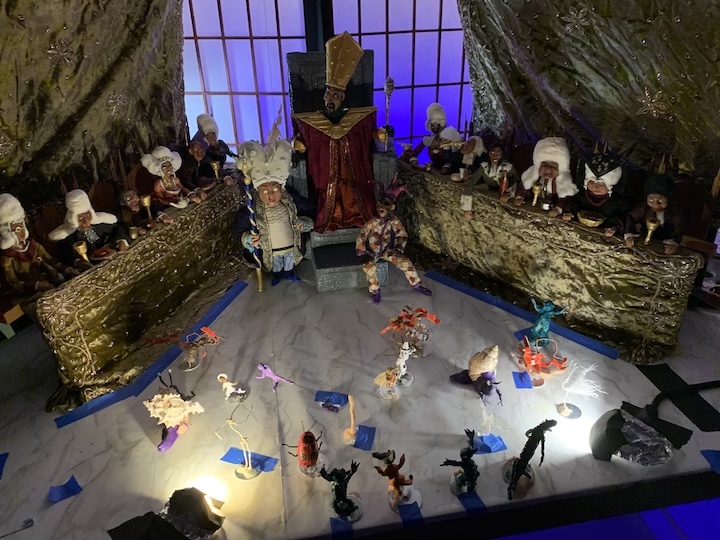
Credit: Les Bêtes puppets... IN COLOR!
Q: Since these puppets were initially for other projects, the color saturation would’ve been all over the place if this hadn’t been in black and white. This aesthetic perfectly fits the film’s nightmarish tone, but would you ever consider releasing the color version, just as a “what if?”
A: There’s been a few requests to “release the color-cut,” but so far there’s no plans to do so. A couple of Directors of Photography I greatly respect say that I shouldn’t, because it’s not the way the film was meant to be seen, and I can understand that point of view. For me, the use of black and white was a tool to hide an impossible number of problems, so watching it in color is more like ripping the sheetrock off a wall to see the wiring underneath: interesting but not satisfying to sit through for 12 minutes. Also, if the whole film is in color, then the ending (when the film switches from black and white to color) no longer holds the same power.
Q: What has become of the puppets since production wrapped?
A: The surviving cast members of Les Bêtes have begun the long, slow path to restoration and permanent mounting in traveling display cases so they can be shown at various screening events in the future. It’s funny how I thought I’d be getting some space back by retiring so many puppets, and now they take up more room than before!
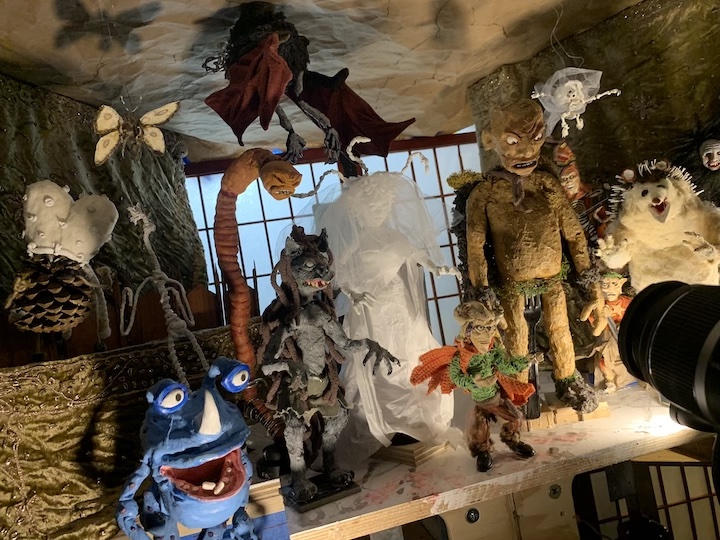
Credit: Les Bêtes puppets get a second life.
Q: I feel like there are many different messages that audiences can take away from the short regarding class, with the king’s court stomping on the strange creatures. In that sense, who do you think the real “beasts” in this story are?
A: I was workshopping other titles that weren’t very good when I saw the words Les Bêtes in a dream. I don’t speak French, but I had been doing a lot of research into Starevich’s films, which all have French titles, so it’s possible I saw the term and it stuck with me subconsciously. I looked up the meaning and at first assumed that the little creatures in the first scene were the “beasts” of the title. Then, as I got into the scenes where the nobility are abusing the little creatures, I thought, “Oh, they are the beasts.” Then the little creatures grow to gigantic size and start literally eating the rich, and I thought, “Oh, they are the beasts.” So ultimately, who “the beasts” are becomes a murkier question that everyone gets to decide for themselves.
Q: Les Bêtes has already received over twenty accolades, including Oscar-qualifying prizes at Annecy and AmDocs Film Festival. If Les Bêtes got nominated for Best Animated Short, would you take one of your puppets to the red carpet? If so, which one?
A: It’s incredible to me that this humble little film, made with no money and such limited resources, has won over 100 awards from festivals all over the world, including the two Oscar-qualifying awards you mentioned. If the inconceivable were to happen and Les Bêtes were to receive a nomination, I would definitely bring the rabbit protagonist with his collection of magical keys—he’s so surreal, and his red skin tone would match the red carpet perfectly!
Nick Spake is the Author of Bright & Shiny: A History of Animation at Award Shows Volumes 1 and 2. Available Now!


